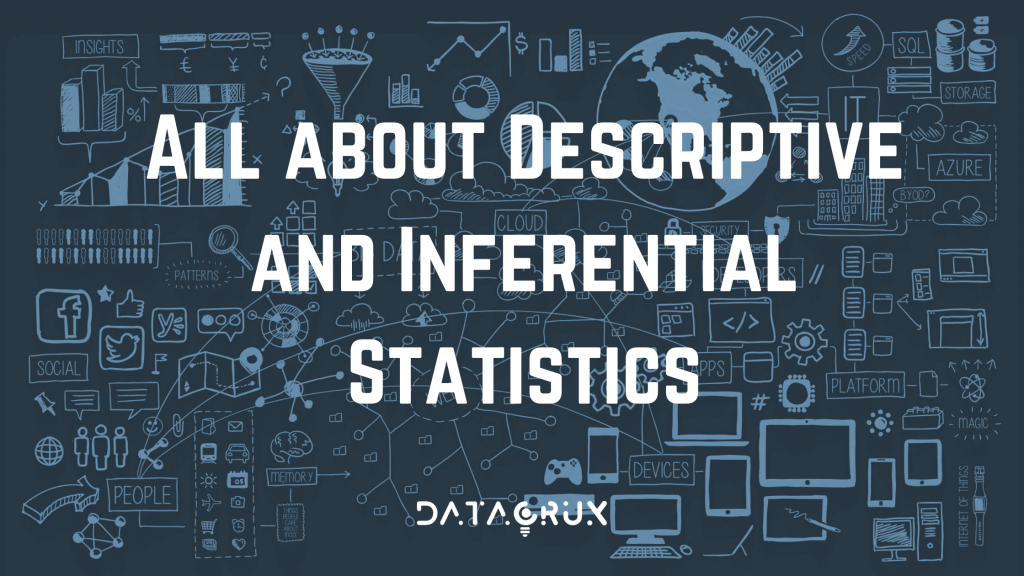
All about Descriptive and Inferential Statistics
So in the previous article we had a brief introduction about Statistics and importance of it in the field of analytics. In this article we will move one foot forward towards understanding the stats.
In this blog we are going to have an overview of types of statistics, Types of data and measurement scale.
Types of Statistics
So basically statistics is divided into 2 major categories i.e. Descriptive and Inferential statistics.

Descriptive statistics:
This is one of the very important part of stats. In this type we deal with numbers that can be numbers, figures or information to describe any certain phenomena. These numbers are known as descriptive statistics.
It helps us to organize and summarize data using numbers and graphs to look for a pattern in the data set.
Some examples of this type of statistics are Measures of central tendency which include mean, median, mode, etc. Also includes Measures of variability that are standard deviation, range, variance, etc.
Example: Reports of production, cricket batting averages, ages, ratings, marks, etc.
Inferential statistics:
To make an inference or draw a conclusion from the population sample data is used. Inferential statistics is a decision, estimate, prediction or generalization about a population based on the sample.
Inferential statistics is used to make interferences from the data whereas descriptive statistics simply describes what’s going on in our data.
Scenario based study:
Suppose a particular college has 1000 students. We are interested to find out how many of the total students prefer eating in canteen and how much prefer eating in mess. A random group of 100 students were selected and hence it becomes our sample data.
So, population size = 1000 college students
sample size = 100 random students selected
So now we can do survey with this 100 student sample and after doing the survey we get the following insights.

So after analyzing the data we get the following visualizations.


Insights rederived:
- 72 % of students prefer eating in canteen.
- Of the total students who prefer canteen 44.4 % are from 4th year.
- Of the total number of students who prefer canteen 72% are from 3rd and 4th year.
- 1st year students are more inclined towards eating in mess.
The above statistics give the trends of data among the sample data. In this insights we are using numbers hence this all is included in Descriptive Statistics.
Now, suppose we wanted to open a canteen or mess in the college from the above insights we can assume that –
- 3rd year and 4th year students are main target to start the business.
- To get more sales you can provide discounts to 1st year and 2nd year students.
- Since from the above insights we can conclude that canteen is better option than that of mess to run a business and most of the students in the data are inclined towards canteen than that of mess.
So here we made interferences/assumptions/estimations from the above insights for the whole college on the basis of the sample data. Hence this is a crucial part of Inferential statistics.
So here we have discussed the main difference between descriptive and inferential statistics based on the above scenario.
The content is very helpful we need such more content. Plse post such content also.